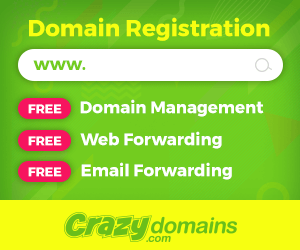To run a website, you’ll need several essential components and resources. Here’s a list of the key things you’ll need:
- Domain Name: A domain name is your website’s address on the internet (e.g., www.example.co.nz). You can register a domain through a domain registrar.
- Web Hosting: Web hosting provides the server space and infrastructure needed to store your website’s files and make it accessible on the internet. There are various types of hosting, including shared hosting, VPS (Virtual Private Server) hosting, and dedicated hosting, depending on your website’s needs and traffic.
- Website Content: This includes text, images, videos, and other media that make up the content of your website. You’ll need to create or gather content relevant to your website’s purpose.
- Website Files: These are the HTML, CSS, JavaScript, and other files that make up your website’s code. If you’re using a CMS like WordPress, these files are generated for you.
- Content Management System (CMS): If you’re not coding your website from scratch, a CMS like WordPress, Joomla, or Drupal can simplify the process of creating and managing content.
- Design and Templates: Decide on the design and layout of your website. You can use pre-designed templates, hire a designer, or customize your website’s look and feel.
- Security: Implement security measures to protect your website from threats like hacking and malware. This includes using secure hosting, updating software regularly, and using security plugins or tools.
- Backup System: Set up regular backups of your website’s files and database to ensure you can recover your site in case of data loss or issues.
- SSL Certificate: An SSL certificate encrypts data transmitted between your website and visitors, ensuring secure communication. It’s essential for e-commerce sites and improves trust.
- Search Engine Optimization (SEO): Implement SEO practices to improve your website’s visibility in search engines. This includes optimizing content, meta tags, and site structure.
- Analytics: Use website analytics tools like Google Analytics to monitor visitor traffic, user behaviour, and other metrics to make informed decisions and improvements.
- Contact Information: If your website serves a business or organization, provide contact information for user inquiries and support.
- Legal Documents: Depending on your website’s purpose and location, you might need legal documents like a Privacy Policy, Terms of Service, and a Disclaimer.
- Compliance: Ensure your website complies with legal and accessibility standards, such as GDPR (General Data Protection Regulation) and WCAG (Web Content Accessibility Guidelines), where applicable.
- Marketing Strategy: Develop a strategy for promoting your website, which may include social media marketing, email marketing, and content marketing.
- Maintenance Plan: Websites require ongoing maintenance, including software updates, content updates, and security monitoring. Create a plan for regular upkeep.
- Budget: Consider the costs associated with domain registration, hosting, design, development, and ongoing maintenance when planning your website.
Remember that the specific requirements for your website may vary depending on its purpose and complexity. It’s essential to plan thoroughly and consider the needs of your target audience when setting up and running a website.
With CU2 Network, creating a website that works got so much easier. Click here to learn more!


